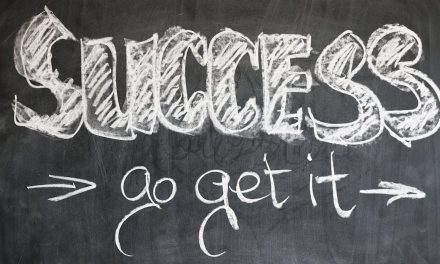Table of Contents
“Unlock the Power of Communication: Master 7 Strategies for Enhanced Skills”
Introduction
Effective communication is a vital skill that plays a crucial role in various aspects of our lives, including personal relationships, professional success, and overall well-being. Whether it’s expressing our thoughts and ideas, listening actively, or resolving conflicts, honing our communication skills can significantly enhance our ability to connect with others and convey our messages effectively. In this article, we will explore seven effective communication strategies that can help you improve your skills and foster better understanding and collaboration in both personal and professional settings.
The Importance of Active Listening in Effective Communication

Effective communication is a crucial skill in both personal and professional settings. It allows individuals to convey their thoughts, ideas, and emotions clearly and efficiently. However, effective communication is not just about speaking; it also involves active listening. Active listening is a fundamental aspect of effective communication that is often overlooked but plays a significant role in enhancing communication skills.
Active listening is the process of fully engaging with the speaker and understanding their message. It requires giving undivided attention, focusing on the speaker’s words, and observing their non-verbal cues. By actively listening, individuals can gain a deeper understanding of the speaker’s perspective, thoughts, and emotions. This understanding is essential for effective communication as it helps build rapport, trust, and empathy.
One of the key benefits of active listening is that it promotes better understanding. When individuals actively listen, they are more likely to grasp the speaker’s intended message accurately. This understanding prevents miscommunication and ensures that the conversation is productive and meaningful. Active listening also allows individuals to ask relevant questions and seek clarification when needed, further enhancing understanding.
Active listening also fosters empathy and emotional intelligence. By paying attention to the speaker’s non-verbal cues, such as facial expressions and body language, individuals can better understand the speaker’s emotions. This understanding enables individuals to respond appropriately and empathetically, creating a supportive and respectful communication environment. Empathy and emotional intelligence are crucial in building strong relationships, both personally and professionally.
Furthermore, active listening helps individuals build trust and rapport with others. When individuals feel heard and understood, they are more likely to trust the listener and open up. This trust forms the foundation for effective communication and collaboration. By actively listening, individuals can establish strong connections with others, leading to improved teamwork, problem-solving, and conflict resolution.
Active listening also plays a vital role in conflict resolution. When conflicts arise, active listening allows individuals to understand the underlying issues and concerns of all parties involved. By actively listening to each perspective, individuals can find common ground and work towards a mutually beneficial solution. Active listening also helps de-escalate conflicts by showing respect and empathy towards all parties involved.
In addition to its interpersonal benefits, active listening also enhances personal growth and learning. By actively listening to others, individuals can gain new insights, perspectives, and knowledge. This continuous learning fosters personal growth and development, allowing individuals to expand their horizons and challenge their own beliefs and assumptions.
To practice active listening, individuals can employ various strategies. First and foremost, it is essential to eliminate distractions and give the speaker undivided attention. This means putting away electronic devices, maintaining eye contact, and avoiding interrupting or multitasking. Additionally, individuals can use verbal and non-verbal cues to show that they are actively listening, such as nodding, summarizing the speaker’s points, and asking open-ended questions.
In conclusion, active listening is a critical component of effective communication. It promotes understanding, empathy, trust, and rapport, while also facilitating conflict resolution and personal growth. By practicing active listening, individuals can enhance their communication skills and build stronger relationships both personally and professionally. So, the next time you engage in a conversation, remember the importance of active listening and strive to be a better listener.
Nonverbal Communication: Enhancing Your Skills
Nonverbal communication plays a crucial role in our daily interactions. It is estimated that more than half of our communication is nonverbal, making it essential to understand and enhance our nonverbal communication skills. By doing so, we can improve our ability to convey messages effectively, build stronger relationships, and achieve greater success in both personal and professional settings. In this article, we will explore seven effective communication strategies to enhance your nonverbal communication skills.
Firstly, it is important to be aware of your body language. Your posture, facial expressions, and gestures can convey a wealth of information to others. Maintaining an open and relaxed posture, making eye contact, and using appropriate hand gestures can help you appear more approachable and engaged in conversations. Additionally, being mindful of your facial expressions can help you convey your emotions accurately and avoid any misinterpretations.
Secondly, paying attention to your tone of voice is crucial. The way you speak can greatly impact how your message is received. Speaking clearly, using appropriate volume and intonation, and varying your pitch can help you convey your message more effectively. It is also important to be mindful of the pace at which you speak, as speaking too quickly or too slowly can hinder understanding.
Thirdly, active listening is a vital component of effective nonverbal communication. By actively listening, you demonstrate your interest and engagement in the conversation. This can be achieved by maintaining eye contact, nodding your head to show understanding, and providing verbal cues such as “uh-huh” or “I see.” Additionally, paraphrasing what the speaker has said can help ensure that you have understood their message correctly.
Next, being aware of cultural differences in nonverbal communication is essential, especially in today’s globalized world. Different cultures have varying norms and expectations regarding body language, gestures, and personal space. Educating yourself about these cultural differences can help you avoid misunderstandings and foster better cross-cultural communication.
Furthermore, using appropriate nonverbal cues to support your verbal message can enhance your communication. For example, using hand gestures to emphasize key points or using facial expressions to convey emotions can help reinforce your message and make it more memorable. However, it is important to use these cues sparingly and in a way that is natural and authentic to you.
In addition, being mindful of your personal appearance can also impact how others perceive you. Dressing appropriately for the occasion and maintaining good personal hygiene can help you create a positive impression and establish credibility. Your appearance can also influence how others respond to your verbal messages, so it is important to consider the overall image you project.
Lastly, practicing self-awareness is crucial for enhancing your nonverbal communication skills. Reflecting on your own communication style, seeking feedback from others, and actively working on improving your nonverbal cues can help you become a more effective communicator. It is important to remember that enhancing your nonverbal communication skills is an ongoing process that requires continuous effort and self-reflection.
In conclusion, nonverbal communication is a powerful tool that can greatly enhance your overall communication skills. By being aware of your body language, paying attention to your tone of voice, actively listening, considering cultural differences, using appropriate nonverbal cues, being mindful of your personal appearance, and practicing self-awareness, you can become a more effective communicator. These strategies can help you convey your messages more effectively, build stronger relationships, and achieve greater success in both personal and professional settings. So, start implementing these strategies today and watch your communication skills soar.
Building Rapport and Trust in Communication
Effective communication is a crucial skill in both personal and professional settings. It allows individuals to convey their thoughts, ideas, and emotions clearly and efficiently, fostering understanding and building strong relationships. One key aspect of effective communication is building rapport and trust with others. When people feel comfortable and trust the person they are communicating with, they are more likely to be open and receptive to the message being conveyed. In this article, we will explore seven effective communication strategies that can help enhance your skills in building rapport and trust.
Firstly, active listening is a fundamental skill that can greatly contribute to building rapport and trust. By giving your full attention to the speaker, maintaining eye contact, and providing verbal and non-verbal cues that show you are engaged, you demonstrate respect and genuine interest in what they have to say. This helps create a positive and trusting environment for communication.
Secondly, empathy plays a crucial role in building rapport and trust. By putting yourself in the other person’s shoes and trying to understand their perspective, you show that you value their feelings and opinions. Empathy allows you to connect on a deeper level and fosters a sense of trust and understanding.
Another effective strategy is to be mindful of your body language. Non-verbal cues such as facial expressions, gestures, and posture can convey a lot of information. By maintaining an open and relaxed posture, using appropriate facial expressions, and mirroring the other person’s body language, you can create a sense of comfort and trust.
In addition, being clear and concise in your communication is essential. Avoid using jargon or complex language that may confuse the listener. Instead, use simple and straightforward language that is easy to understand. This helps prevent misunderstandings and ensures that your message is effectively conveyed.
Furthermore, being aware of cultural differences is crucial in building rapport and trust. Different cultures have different communication styles and norms. By being sensitive to these differences and adapting your communication style accordingly, you show respect and create a positive impression.
Another effective strategy is to be mindful of your tone of voice. The way you speak can greatly impact how your message is received. Using a calm and respectful tone conveys professionalism and fosters trust. On the other hand, a harsh or condescending tone can create barriers and hinder effective communication.
Lastly, being reliable and following through on your commitments is vital in building trust. When you consistently deliver on your promises and meet deadlines, you demonstrate reliability and integrity. This helps establish a reputation for trustworthiness and strengthens relationships.
In conclusion, building rapport and trust is a crucial aspect of effective communication. By actively listening, showing empathy, being mindful of body language, using clear and concise language, being aware of cultural differences, using an appropriate tone of voice, and being reliable, you can enhance your communication skills and foster strong relationships. These strategies not only contribute to effective communication but also create a positive and trusting environment that allows for open and meaningful interactions. By incorporating these strategies into your communication style, you can become a more effective communicator and build stronger connections with others.
Overcoming Barriers to Effective Communication
Effective communication is a crucial skill in both personal and professional settings. It allows us to convey our thoughts, ideas, and emotions clearly and efficiently. However, there are often barriers that hinder effective communication, making it essential to develop strategies to overcome these obstacles. In this article, we will explore seven effective communication strategies that can enhance your skills and help you overcome these barriers.
The first strategy is active listening. Active listening involves fully engaging with the speaker and paying attention to both verbal and non-verbal cues. By doing so, you can better understand the speaker’s message and respond appropriately. This strategy requires avoiding distractions, maintaining eye contact, and providing feedback to the speaker to show that you are actively listening.
The second strategy is using clear and concise language. Effective communication requires using language that is easily understood by the listener. Avoid using jargon or technical terms that may confuse the listener. Instead, use simple and straightforward language to convey your message clearly.
The third strategy is being aware of non-verbal communication. Non-verbal cues, such as facial expressions, body language, and tone of voice, can greatly impact the message being conveyed. Paying attention to these cues and ensuring that your own non-verbal communication aligns with your words can enhance the effectiveness of your communication.
The fourth strategy is asking clarifying questions. Misunderstandings can often occur due to assumptions or lack of clarity. By asking clarifying questions, you can ensure that you have understood the speaker’s message correctly. This strategy also demonstrates your interest and engagement in the conversation.
The fifth strategy is being mindful of cultural differences. In today’s globalized world, it is essential to be aware of cultural nuances that may impact communication. Different cultures have varying communication styles and norms. By being mindful of these differences, you can adapt your communication style to ensure effective communication with individuals from diverse backgrounds.
The sixth strategy is practicing empathy. Empathy involves understanding and sharing the feelings of others. By putting yourself in the shoes of the speaker, you can better understand their perspective and respond in a more empathetic manner. This strategy fosters a positive and supportive communication environment.
The seventh strategy is being open to feedback. Effective communication is a continuous learning process. Being open to feedback allows you to identify areas for improvement and make necessary adjustments. Actively seeking feedback from others and being receptive to their suggestions can greatly enhance your communication skills.
In conclusion, effective communication is essential for success in both personal and professional settings. By implementing these seven strategies – active listening, using clear and concise language, being aware of non-verbal communication, asking clarifying questions, being mindful of cultural differences, practicing empathy, and being open to feedback – you can overcome barriers to effective communication and enhance your communication skills. Remember, effective communication is a skill that can be developed and improved with practice and dedication.
Q&A
1. What are the benefits of effective communication strategies?
Effective communication strategies can improve understanding, build stronger relationships, increase productivity, resolve conflicts, and enhance overall teamwork.
2. How can active listening contribute to effective communication?
Active listening involves fully focusing on and understanding the speaker’s message, which helps to avoid misunderstandings, build trust, and foster effective communication.
3. Why is nonverbal communication important in effective communication?
Nonverbal communication, such as body language and facial expressions, can convey emotions, intentions, and attitudes, adding depth and clarity to verbal messages and enhancing overall communication effectiveness.
4. How can feedback contribute to effective communication?
Feedback provides valuable information about the effectiveness of communication, helps to clarify expectations, encourages improvement, and fosters a culture of open and honest communication.
Conclusion
In conclusion, implementing effective communication strategies is crucial for enhancing one’s communication skills. By actively listening, using non-verbal cues, being clear and concise, adapting to different communication styles, asking questions, providing feedback, and being mindful of body language, individuals can significantly improve their ability to communicate effectively in various personal and professional settings. These strategies not only promote better understanding and collaboration but also help build stronger relationships and achieve desired outcomes.




